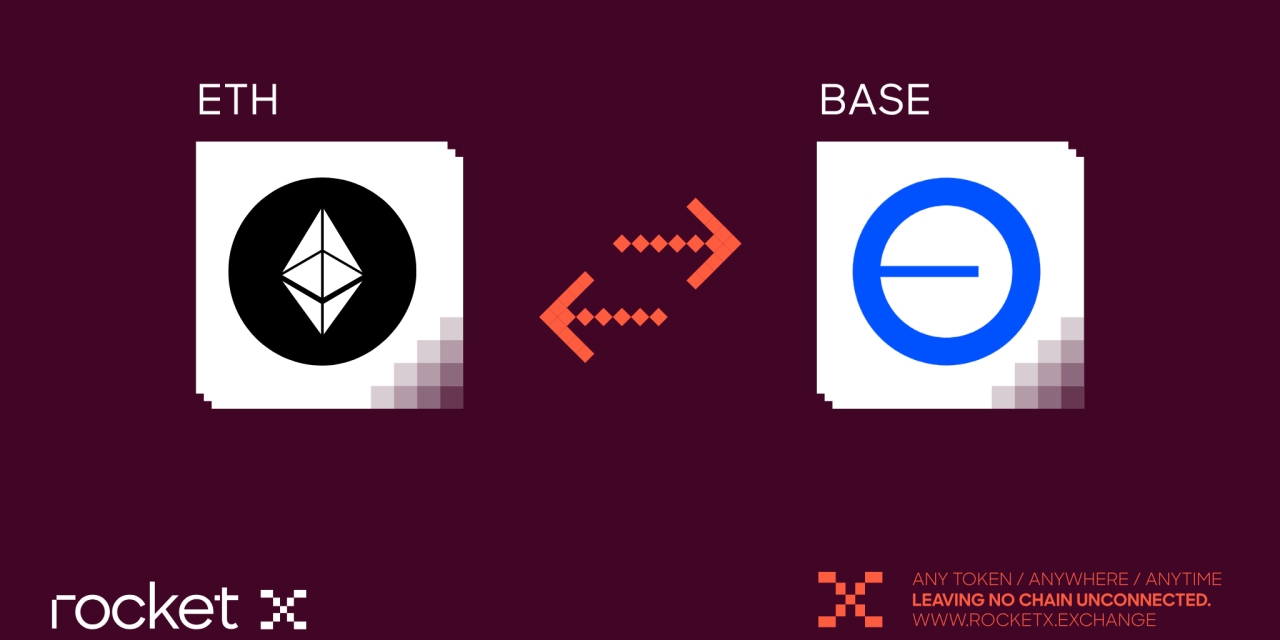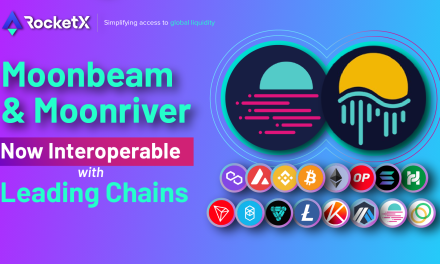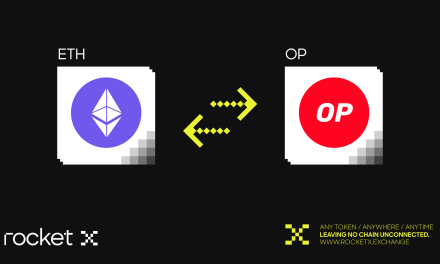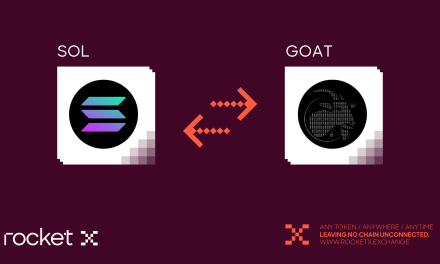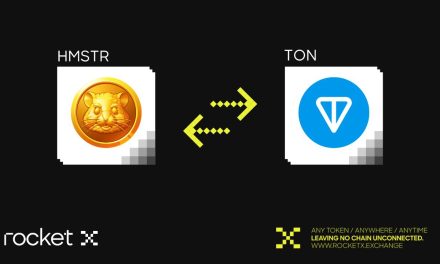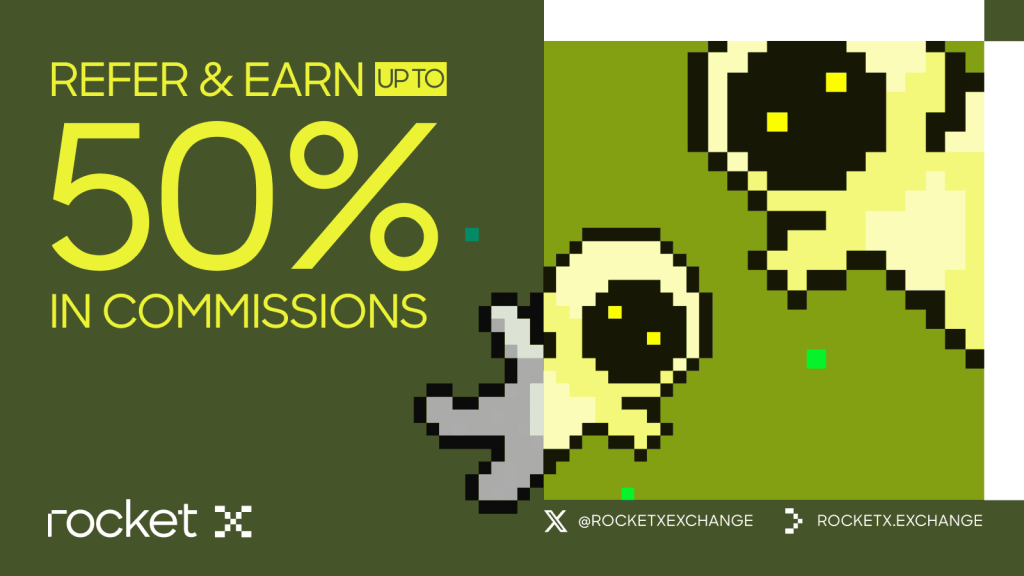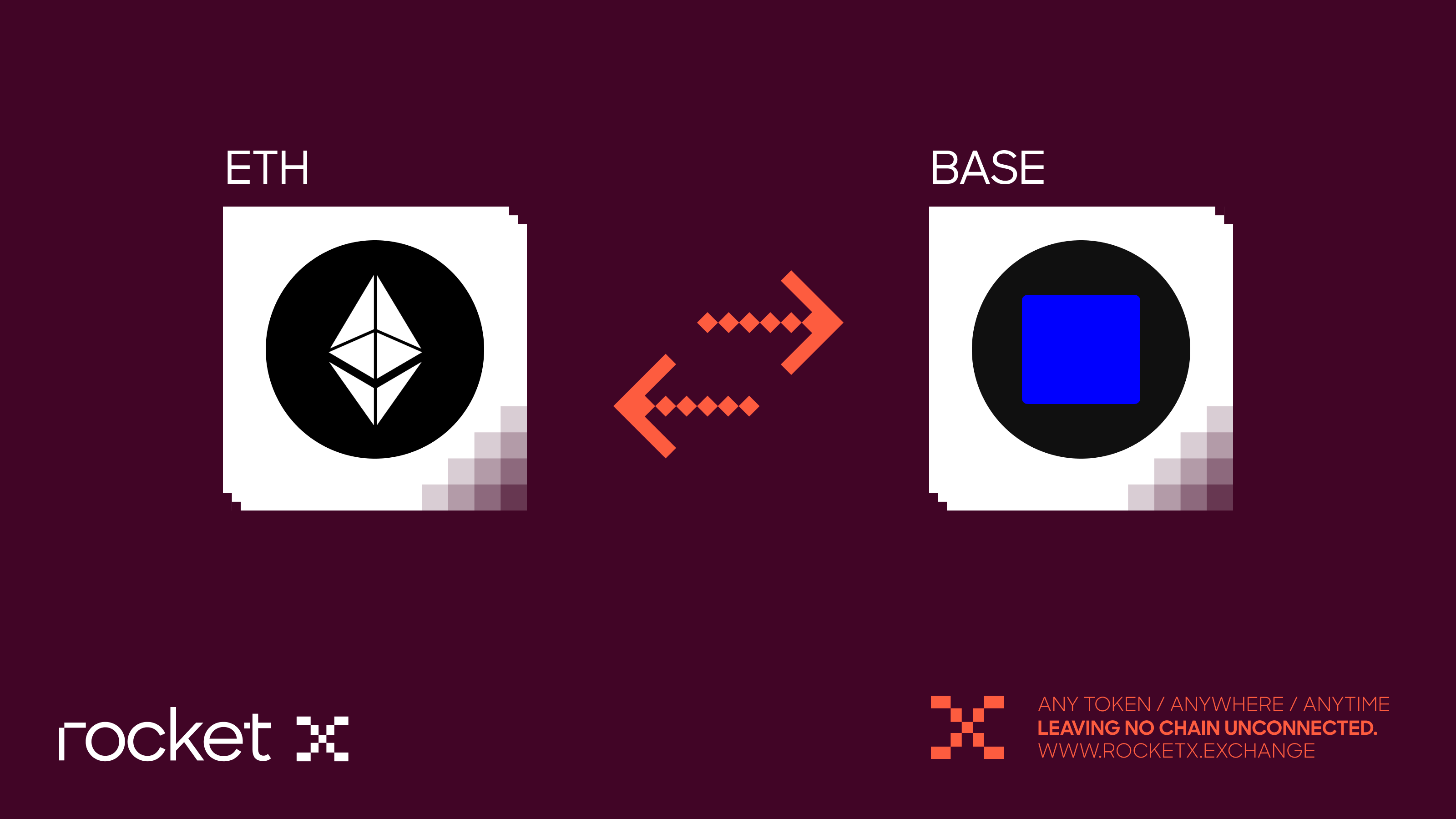
Introduction
Base has emerged as one of the fastest-growing Ethereum Layer 2s, boasting over $4.7B in TVL, 1M+ daily active users, and a fresh identity under the new Base App rebrand. Backed by Coinbase, this L2 isn’t just scaling Ethereum; it’s redefining what seamless, decentralized Web3 access looks like.
If you’ve been exploring DeFi, NFTs, or just looking for a cheaper and smoother way to use Ethereum-based apps, Base is worth checking out. But before you can start using this network, you’ll need to move your assets to this network.
In this guide, we’ll walk you through everything you need to know to get started. We’ll explain what Base Network is, how it works, and why so many users are migrating to it. You’ll also learn how to bridge to this Network using RocketX Exchange, a platform that lets you transfer tokens across nearly 200 blockchains with ease. On top of that, we’ll cover how to swap tokens once your assets are on Base, and even talk about the potential of a future token or airdrop.
By the end of this guide, you’ll be ready to move your assets to Base confidently and make the most of everything the network has to offer.
What is Base Blockchain?
It is a Layer 2 blockchain built by Coinbase, one of the most trusted and well-known names in the crypto industry. It’s designed to make Ethereum faster, cheaper, and more accessible, especially for everyday users and developers who want to avoid high gas fees and slow confirmation times.
It is powered by Optimistic Rollups and runs on the OP Stack, a modular framework developed by the Optimism team. This setup allows Base to process transactions off-chain and batch them back to Ethereum, ensuring lower fees and faster execution while still relying on Ethereum’s security.
Recently, They underwent a major transformation. Coinbase rebranded its wallet infrastructure as the “Base App,” a super-app that merges payments, DeFi, content creation, and social interaction into one unified UX. This shift reflects Base’s new direction: evolving from a simple scaling solution to a SocialFi infrastructure layer, built to host a new wave of tokenized social platforms, creator economies, and on-chain communities.
Thanks to its tight integration with Coinbase, strong developer support, and expanding ecosystem, Base is quickly becoming one of the most active and innovative Layer 2 networks powering everything from DeFi and NFTs to gaming and social apps.
Key Features That Make this Blockchain Work
While we’ve already touched on how Base uses the OP Stack and Optimistic Rollups, let’s look at the specific features that make Base a high-performance Layer 2 — and why so many users and developers are adopting it.
Scalability Without Sacrificing Security
It processes transactions off-chain and finalizes them on the Ethereum blockchain. This keeps costs low while still inheriting Ethereum’s security — making it both fast and trustworthy.
Full EVM Compatibility
Since Base is EVM-compatible, developers can deploy existing Ethereum smart contracts directly without rewriting anything.
Interoperability by Design
It isn’t an isolated chain. It’s built to connect with Ethereum, Optimism, and other Layer 2s.
Backed by Coinbase Infrastructure
Base benefits from Coinbase’s robust backend, security practices, and userbase. That means better uptime, smoother UX, and a strong foundation for onboarding new users into Web3.
Focused on Mass Adoption
With its new App (formerly Coinbase Wallet), It is positioning itself as the go-to chain for everyday Web3 users — from payments and NFTs to on-chain social media.
How to Bridge Assets to Base Blockchain Using RocketX
Bridging your ETH to the Base network is easier than ever with RocketX — a unified platform that lets you move assets across nearly 200 blockchains with just a few clicks. No more switching between apps or worrying about complex bridge routes. Whether you’re coming from Ethereum, Arbitrum, Polygon, or any other chain, RocketX streamlines the entire process.
Here’s how to do it:
1. Visit RocketX Exchange
- Open RocketX Exchange in your browser.
2. Connect Your Wallet
- Click “Connect Wallet” and select your preferred wallet (e.g., MetaMask, WalletConnect).
- Ensure your wallet is funded with enough assets for bridging and gas fees.
3. Select Source and Destination Networks
- Choose the blockchain where your assets are held as the Source Network (e.g., Ethereum, BNB Chain).
- Select Base as the Destination Network.
4. Choose the Asset to Bridge
- Pick the token you want to transfer (e.g., ETH, USDC, or USDT).
- Confirm that the token is supported on both the source and destination networks.
5. Enter the Bridge Amount
- Specify the amount you wish to bridge.
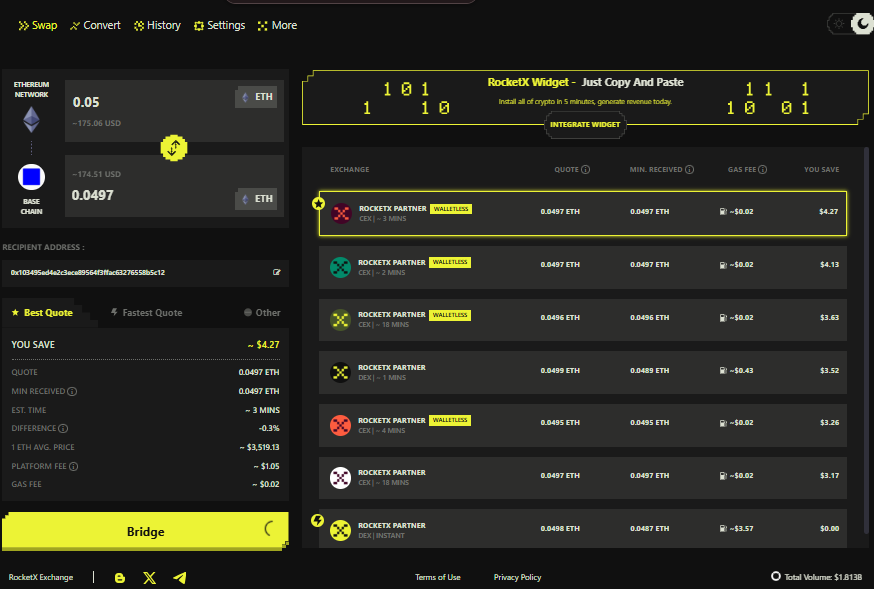
T6. Review and Confirm:
- Carefully review the transaction details, including associated fees and the estimated processing time.
- Click on “Bridge” to proceed with the transaction.
7. Approve and Wait for Processing:
- Confirm the transaction in your wallet and authorize the necessary permissions.
- Wait for the ETH to be transferred from the Ethereum network to the Base network. Once the transaction is processed, verify the successful transfer in your wallet.
You can also watch our video on YouTube to know more about how to bridge to base network.
How to Swap Assets on Base Network
Once your bridged assets are on the Base network, you can easily swap or trade them. Unlike bridging, where you move assets from one network to another, swapping on Base involves changing your assets within the same network. This makes the process straightforward and quick, allowing you to manage your assets directly without switching to other networks.
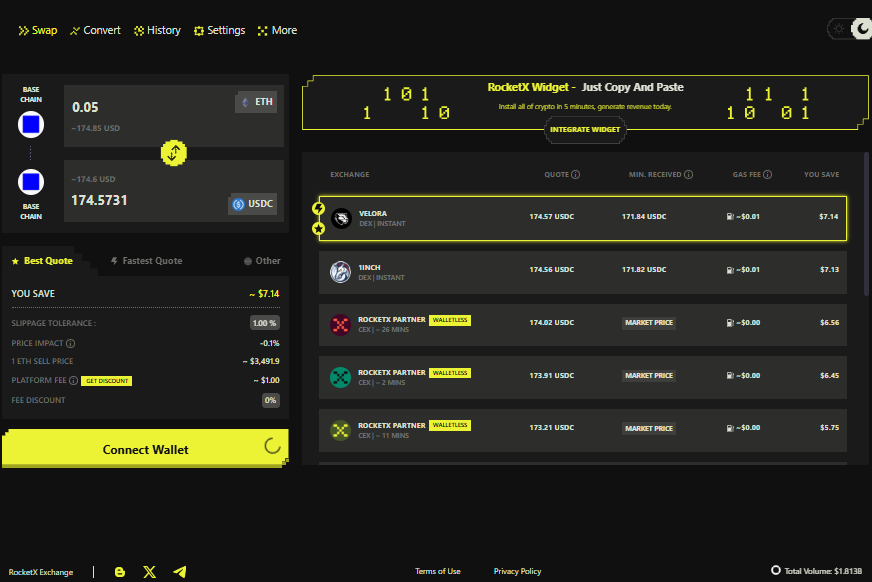
Is There a Base Token or Airdrop Coming?
As of now, Base has not officially announced a native token. But in crypto, that doesn’t mean it won’t happen.
Many Ethereum Layer 2 networks like Arbitrum, Optimism, and Starknet launched tokens after building a strong userbase, often rewarding early adopters through generous airdrops. That’s why a large part of the crypto community believes that Base could eventually launch its token, and when it does, it might reward users who were active early on.
In recent months, Base has exploded in activity, surpassing $4.7 billion in TVL, with over 1 million daily active users and $185K+ in daily revenue. This level of growth has outpaced many competitors, making Base not only one of the most active Layer 2s but also the most profitable.
If Base were to launch a token, there’s a good chance early adopters, especially those who bridge and stay active, could be among the first rewarded.
While nothing is confirmed, here are a few things you can do to increase your chances of qualifying for a potential airdrop:
- Use the Blockchain Frequently: Regularly interact with Base’s dApps and services.
- Bridge Assets : Conduct bridging transactions using RocketX to show activity.
- Participate in Ecosystem Activities: Stake assets, vote in governance proposals, or provide liquidity in Base-based protocols.
- Monitor Announcements: Follow Base’s official channels for updates on any token plans or airdrop campaigns.
Conclusion
The Base blockchain offers an exciting opportunity to explore Ethereum Layer 2 solutions backed by Coinbase’s robust ecosystem. Whether you’re a developer looking to deploy dApps or a user seeking low-cost transactions, Base provides a scalable and interoperable environment.
Using RocketX Exchange, you can easily bridge assets to Base and access its growing ecosystem. With a potential token launch on the horizon, staying active on Base could position you for future rewards.
Start your journey with Base blockchain today—secure, scalable, and seamlessly accessible with RocketX!

PulseChain Explained: What It Is, Risks to Know, and How to Bridge to PulseChain Safely
Introduction PulseChain is an Ethereum-compatible Layer-1 blockchain launched in May 2023 with a focus on low transaction fees, faster block times,...
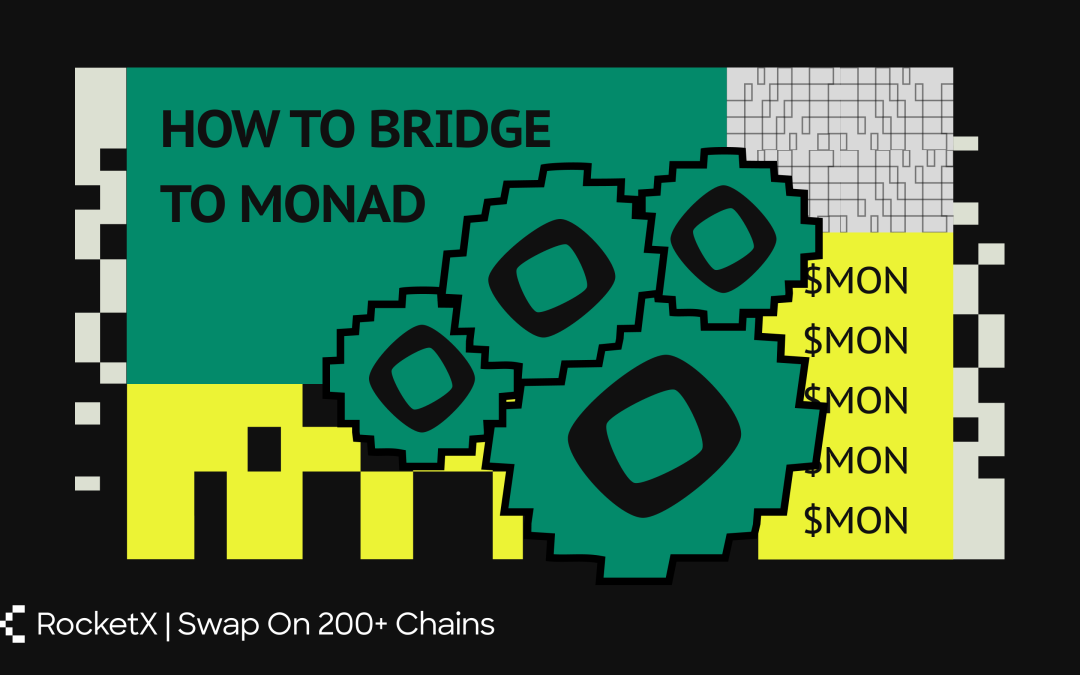
Monad Network Explained: What It Is, How It Works, and How to Bridge to the MON Network
Introduction Monad Network is one of the most talked-about Layer 1 blockchains to launch in 2025. Built to solve Ethereum’s long-standing...

